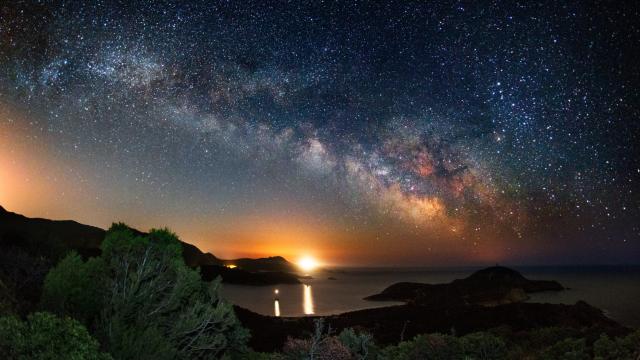For the past few months, we’ve spent quite a bit of time outside in the evenings, taking in the night sky. We’ve had a few memorable space-related moments this year — including a once-every-6,000-years comet and a bunch of meteor showers — and it has been something free to do and look forward to during a period when it has been difficult keeping track of time.
But if you’ve ever grabbed your phone (or, you know, an actual camera) and tried to get a few decent shots of the night sky, you may not have been pleased with the results. And then, as you scroll through your Instagram feed, you see a friend post these incredible images that look like they could have been from NASA.
First of all, your friend probably has fancy (read: professional grade and expensive) photography equipment and also knows how to use it. (For example, the photo above was not taken on a phone.) But what if you’re not really that serious about capturing images of the night sky and just wanted a quick tip that could improve your chances of snapping something decent on your phone? Then you’ve come to the right place.
Go somewhere with a very dark sky
Over on Shutterbug, a photographer by the name of Jess Santos wrote a beginner’s guide to astrophotography. And while much of it is focused on having the right equipment and knowing how to use it during and then after your photoshoot, she does provide one tip that could be useful for any of us amateurs: Find the darkest outdoor location possible.
If you live in the city or suburbs, you’ve probably noticed the light pollution at night from your window. It becomes our normal version of what “dark” looks like. Then we visit a rural area at night and strain our necks looking up because we can’t believe how actually dark it is and how much you can see in the sky.
To find genuinely dark locations, Santos recommends doing a quick Google search for dark sites in your area. You can also try DarkSiteFinder (there’s a decent chance Google will bring you here anyway).
The moon makes a difference
Again, if you live in a city, the moon is definitely visible, but it doesn’t seem like a major source of light. Once you’re in a dark area, though, you immediately notice how bright it actually is. This is something Santos also suggests taking into consideration when looking for a spot (if you’re specifically trying to capture, stars, planets and other non-moon things):
If you are photographing during a full moon or even a half moon, stars will appear washed out by its light…When planning a shoot on a trip my first check is the moon phase calendar.
You will want to photograph the stars during the new moon phase if at all possible; this is when the moon is in shadow and therefore no longer drowns out the light of the stars. If this is not possible, verify the rise and set times of the moon, and align these with the times that the Milky Way is visible.
An astronomy app or Google search can help you figure when all of that is happening, too. And no, your phone photos probably won’t end up in National Geographic, but they’ll likely be an improvement over what you’d normally be able to capture from your deck or fire escape. It can also be a fun activity for the end of summer, and something the kids could get into (if it isn’t past their bedtime).

Leave a Reply
You must be logged in to post a comment.